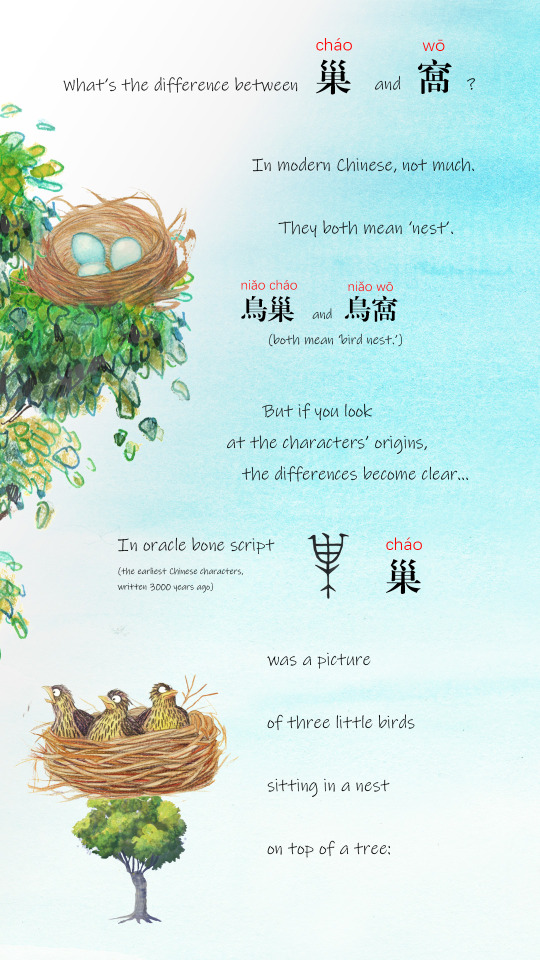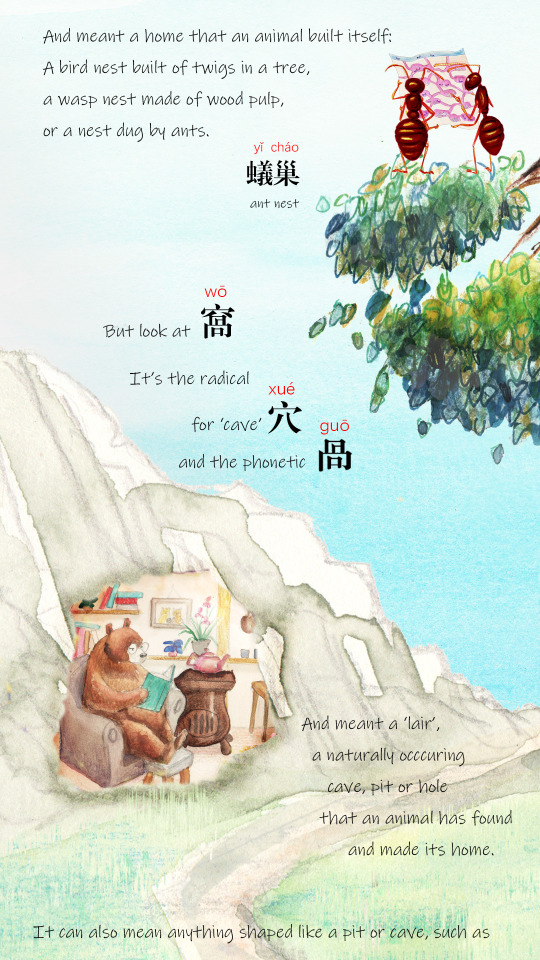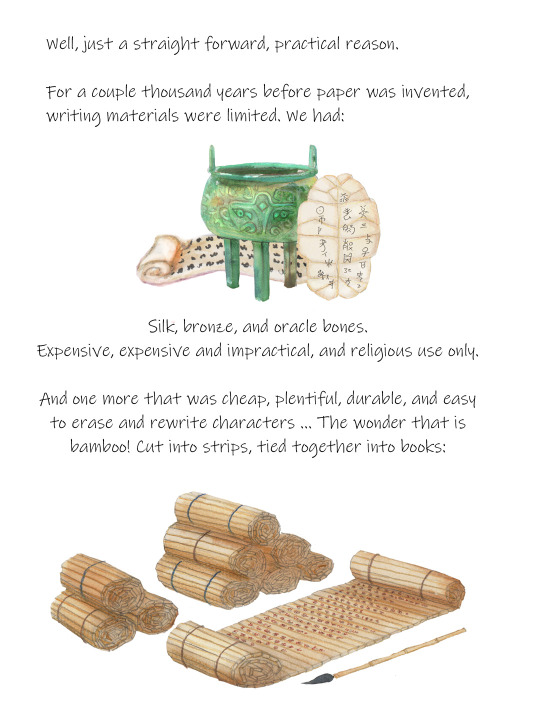study-to-rule-the-world
961 posts
«Study so hard so that you can rule the world.» (I love learning. I speak English and Italian. I studied Latin for 5 years. I'm learning German and Mandarin Chinese. Occasionally I study Korean, Japanese, Indonesian, Sign languages, Braille and linguistics. )
Don't wanna be here? Send us removal request.
Text
so, i've witnessed multiple instances of croatian children (approx. in the 7 - 15 age range, so like, generation alpha + younger zoomers) conversing amongst each other in english instead of croatian. the last time was at my local gas station, where i heard two girls discuss what chocolate bars they should buy in (grammatically correct but clearly accented) english before switching to (flawless) croatian while paying for their chocolate
anyone i've tried to talk abt this irl uniformly reacted with horror, all of them seemingly convinced english is eventually going to entirely displace croatian as a native language—but i'm not really sure that's what's going on. knowledge of english is a really new phenomenon in croatia (and the rest of former yugoslavia). really new—mastery of the language begins w zoomers, more or less. you shouldn't expect any croat over the age of 25 to speak english fluently, and any over the age of 35 to speak english at all. (millennials + younger gen xers are nominally fluent in german; their parents are nominally fluent in russian, and their parents are nominally fluent in german, again). it is perfectly reasonable for a young croat to assume nobody older than them—say, a gas station clerk, or the noisy old fart standing behind them in the queue—is going to be privy to the content of their conversation if they converse in english. this leads me to think these kids are using english as an adult-exclusive cipher. which is pretty fucking cool, actually, even though i imagine it's not really the sort of thing one should expect to have a long shelf life, esp. as older zoomers reach child-rearing age
580 notes
·
View notes
Text
been doing a LOT of analog note-taking / journaling / planning lately (new years' resolution fulfilled! yes!), and I've slowly but surely started writing mostly in cursive again.
that said, I'm old (almost 35, ew) so I have questions.
if you want to RB this and put you age / locale / whatever else you think is relevant in the tags, that'd be very cool
11K notes
·
View notes
Text
Types of Synesthesia
There are many different types of synesthesia, but they may be categorized as falling into one of two groups: associative synesthesia and projective synesthesia. An associate feels a connection between a stimulus and a sense, while a projector actually sees, hears, feels, smells, or tastes a stimulation. For example, an associator might hear a violin and strongly associate it with the color blue, while a projector might hear a violin and see the color blue projected in space as if it were a physical object.
There are at least 80 known types of synesthesia, here there are a few:
Chromesthesia: In this common form of synesthesia, sounds and colors are associated with each other. For example, the musical note "D" may correspond to seeing the color green.
Grapheme-color synesthesia: This is a common form of synesthesia characterized by seeing graphemes (letter or numerals) shaded with a color. Synesthetes don't associate the same colors for a grapheme as each other, although the letter "A" does appear to be red to many individuals.
Number form: A number form is a mental shape or map of numbers resulting from seeing or thinking about numbers.
Lexical-gustatory synesthesia: This a rare type of synesthesia in which hearing a word results in tasting a flavor. For example, a person's name might taste like chocolate.
Mirror-touch synesthesia: While rare, mirror-touch synesthesia is noteworthy because it can be disruptive to a synesthete's life. In this form of synesthesia, an individual feels the same sensation in response to a stimulus as another person. For example, seeing a person being tapped on the shoulder would cause the synesthete to feel a tap on the shoulder too.
olfactory-visual synesthesia: when the synesthete smells an odor, they perceive it as inherently colored.
sound-emotion synesthesia
pain-color synesthesia: Each type of pain produced its individual and invariable color, for instance: Hollow pain, blue color; sore pain, red color; deep headache, vivid scarlet; superficial headache, white color; shooting neuralgic pain, white color.
personality-color synesthesia (auras)
time unit- color synesthesia (for example Monday could be red and January could be yellow)
ordinal linguistic personification synesthesia: letters have emotional valences , as well as a sex and personality
Who has synesthesia?
More women have synesthesia than men. Some research suggests the incidence of synesthesia may be higher in people with autism and in left-handed people. Whether or not there is a genetic component to developing this form of perception is hotly debated.
Sources:
https://www.thoughtco.com/synesthesia-definition-and-types-4153376
https://www.cogneurosociety.org/synesthesia_smell_russell/
https://www.google.com/amp/s/www.psychologytoday.com/us/blog/the-superhuman-mind/201404/colored-pain%3famp
https://www.ncbi.nlm.nih.gov/pmc/articles/PMC4286234/
208 notes
·
View notes
Text
69 notes
·
View notes
Text
Boyfriend vs Friend in German
In German the word “Freund” can mean both “male friend” or “boyfriend”, and “Freundin” can mean both “female friend” or “girlfriend”. In order to avoid sending the wrong message, it’s best to stick to the indefinite “ein/eine” for buddies, and the possessive “mein/meine” for romantic relationships:
“Eine Freundin von dir ist hier.” – “A friend of yours (who is a girl) is here.”
“Mein Freund ist sehr nett.” – “My boyfriend is very nice.”
“Meine Freundin ist da.” – “My girlfriend is there.”
“Er ist ein Freund von mir.” – “He is a friend of mine.”
246 notes
·
View notes
Photo


This NPR interview with with Angela Saini about how race science never really left the global scientific consciousness is super interesting! I’m gonna read her book!
79K notes
·
View notes
Text
I had to use Google translate from Latin (!!!!) because my brain thought "hell yeah, let her forget the word 'hope' and remember 'spes' instead"
0 notes
Text
Collection of open educational resources for Mandarin Chinese (& Russian)
I saved a bunch of open educational resources a while ago and then promptly forgot about them. Haven't really looked over them in detail, but hey, why not share them in case they are useful to you?
Chinese Reading Modules by Yan Li https://ceas.ku.edu/chinese-reading-modules
These reading passages are intended for students at the intermediate to advanced level in their study of Chinese. They were developed with funding from the KU Center for East Asian Studies.
Ting Yi Ting by Sheree Willis & Yan Li https://opentext.ku.edu/tingyiting/
An online guide that enables learners to hear and identify phonemic categories in Mandarin (including lexical tones) in a variety of phonetic contexts, and to associate those phonemes with Pinyin orthography. Includes extensive audio examples and computer-graded comprehension checks.
Russian Aspect in Conversation by Stephen M. Dickey, Kamila Saifeeva, and Anna Karpusheva https://opentext.ku.edu/russianaspect/
This resource is aimed at demystifying some important uses of imperfective verbs for learners of Russian at the intermediate level and above. It focuses on patterns of imperfective usage in infinitives, imperatives and the past tense that involve single completed actions and that are difficult for foreign learners to grasp.
Elementary Chinese I by Wenying Zhou https://openbooks.lib.msu.edu/chs101/
This open textbook is designed for those who are learning Chinese as a second/foreign language in their first semester. It has eight chapters, covering topics including a brief introduction about the Chinese language, greetings, and self-introduction, hobbies, nationalities, family members and occupations, inviting friends to dinner, talking about food and beverage, making phone calls, and talking about classes and exams.
Elementary Chinese II by Wenying Zhou https://openbooks.lib.msu.edu/chs102/
This open textbook is designed for those who are learning Chinese as a second/foreign language in their second semester. It has six chapters, covering topics including describing school life, shopping in stores and online, transportation means, reporting weather and climates, ordering foods, and asking and giving directions.
Elementary Mandarin by Carl Polley https://open.umn.edu/opentextbooks/textbooks/elementary-mandarin
This course is designed for learners with no background in Chinese. It introduces basic structures of the Mandarin Chinese language with emphasis on listening, speaking, reading and writing skills. Students will gain these four skills in standard Mandarin Chinese, attaining approximately the Novice-High level on the ACTFL-ETS (American Council on the Teaching of Foreign Languages) proficiency scale. Topics of conversation include basic greetings, names, family, work, study, and hobbies.
开源中文 EverFlow Mandarin by Runqing Qi, Yingjie Li, and Yu Zhang https://www.colorado.edu/project/everflowmandarin/
EverFlow Mandarin is a textbook aimed at enhancing the language proficiency of Chinese learners at the intermediate level as determined by the American Council on the Teaching of Foreign Languages (ACTFL). It is designed for students who have completed two years of Chinese language courses in comprehensive universities in North America. After studying the content of the ten lessons in this textbook, students' Chinese proficiency can reach the levels of either Intermediate-High or Advanced-Low as determined by the ACTFL.
Various Chinese resources by Wen-Hua Teng https://coerll.utexas.edu/coerll/materials/language/chinese/
Learning Chinese: A Foundation Course In Mandarin (汉语基础教材) by Julian K. Wheatley https://ocw.mit.edu/courses/res-21g-003-learning-chinese-a-foundation-course-in-mandarin-spring-2011/pages/online-textbook/
This online textbook represents materials that were used in the first four semesters (two years) of the Mandarin program at MIT. They eventually formed the basis of a print textbook of the same name, published by Yale University Press (elementary level available 2011, intermediate level due late 2011 or early 2012). Information about the Yale edition, plus online materials that could supplement the OCW material with some allowances. The Yale website also includes extensive audio-clips (numbering over 40 by July 2011, up through Unit 4), which cover much of the same ground as the OCW version.
IChineseER from Pomona College https://lchineseer.sites.pomona.edu/
Diverse Russian: A Multicultural Exploration by Anna Tumarkin and Shannon Donnally Quinn https://wisc.pb.unizin.org/diverserussian/
This textbook invites students to explore the diverse Russian-speaking communities across Eastern Europe, Central Asia, and North America. It highlights the rich cultures and histories of Ukraine, Kazakhstan, Indigenous populations of Russia, the Baltic states, Georgia (Sakartvelo), and Russian-speaking communities in the United States. Supported by the Less Commonly Taught and Indigenous Languages Partnership and funded by the Andrew W. Mellon Foundation, this OER textbook provides a unique, immersive experience that seamlessly integrates cultural understanding with practical language skills.
364 notes
·
View notes
Text
There no shame in never becoming fluent in your target language(s). Learning a new language even a little bit is great. Having the ability to communicate even a little bit is great. Learning about the culture(s) is great. You're doing great. Enjoy the experience.
7K notes
·
View notes
Note
Can you read any writing system that isn't the Latin alphabet?
4K notes
·
View notes
Photo

‘Elephant Chess’ and Persian loanwords in Chinese
In Chinese, the word for chess is ‘elephant pieces’ (象棋 xiàng qí,‘象’ elephant and ‘棋’ meaning a piece in a board game). This is because the game was once played with ivory chess pieces.
Originally the game only had four different pieces. During the Northern Song dynasty (北宋 Běi Sòng (960-1127)) they added the elephant piece, equivalent to bishops in Western chess*. But China never had war elephants, so where did this piece come from?
Persia.
Persia had war elephants, and Persian chess, and Persian chess had war elephant pieces.
At the time there was a roaring trade between Persia and China, as there had been for centuries, and the exchange was not only in material goods but inevitably it was also a cultural exchange. Chinese adopted words from the Persian language some of which are still in common use today:
狮子 shī zi lion, is ‘shir’ in Persian, and lions have been a symbol of the country and its royal family from ancient to modern times. Note that though the Asiatic lion (Panthera leo leo) was native to Persia, the only surviving population is in India.
葡萄 pú táo grape, comes from the word for wine, pronounced ‘baa-der’ in Persian
枸杞 gǒu qǐ wolfberry, ‘goji’ berry (fruit of the boxthorn, Lycium chinense)
石榴 shí liu pomegranate (Punica granatum), native to Persia and northern India. Note that the word ‘grenade’ comes from the French for pomegranate, and the Chinese word for hand grenade does too: 手榴弹.
(These last two, goji berry and pomegranate, are Persian in origin according to Chinese sources, though I can’t find corroboration in English).
So with all this cultural influence, it’s not a great stretch to see they’d introduce a chess piece too.
* Only on the black side, on the red side they added the ‘minister’ piece (相 xiàng) which is a homonym for elephant.
25 notes
·
View notes
Photo



What’s the difference between 巢 cháo and 窩(窝) wō?
In modern Chinese, not much.
They both mean ‘nest.’
(鳥巢 niǎo cháo and 鳥窩(鸟窝) niǎo wō both mean 'bird nest’).
But if you look at the characters’ origins, the differences become clear.
In oracle bone script (the earliest Chinese characters, written 3000 years ago), 巢 was a picture of three little birds sitting in a nest on top of a tree. It meant a home that an animal builds itself: A bird nest built of twigs; a wasp nest made of wood pulp; or a nest dug by ants.
蟻(蚁)巢 yǐ cháo ant nest
But look at 窩(窝) wō,it’s the radical for 'cave’ (穴 xué) and the phonetic guō (咼(呙)), and meant a 'lair’: A naturally occurring cave, pit or hole that an animal has found and made its home.
It can also mean something shaped like a pit or cave, such as
胳肢窩(窝) gā zhi wō armpit, or
酒窩(窝) jiǔ wō dimple (in the cheek, etc), literally 'alcohol lair.’
Please note that the phonetic in 窩(窝) wō, 咼(呙) guō, you’ll most likely encounter as a last name, but it’s also pronounced 'wāi’ and means 'lopsided’, originally describing a lopsided mouth (hence the 口字旁 mouth radical). But a much more common wāi character for lopsided is 歪,which is an extremely satisfying character, made up of '不正.’
@liu-anhuaming
413 notes
·
View notes
Photo





The vast majority (around 80%) of Chinese characters are made up of a radical (the general meaning) and a phonetic.
Radical 女 nǚ (woman) and phonetic 馬 mǎ (horse) = 媽 mā, mother (your mum sounds like a horse).
But a small minority are pictograms, that is to say a picture of the thing they represent.
Pictograms are the earliest characters, thousands of years old, but many are still used every day.
If you look at the oracle bone script for rat, tiger and elephant you’ll see they are clearly pictures of the animal they signify.
But if you look at the modern versions, you’ll notice something odd, they’re all rotated 90 degrees onto their sides.
Why? Why are all these characters written with the animals balancing on their tails?
Well, it’s for a straight-forward, practical reason.
For a couple thousand years before paper was invented writing materials were limited. We had silk (expensive), bronze (expensive and impractical), and oracle bones (religious use only).
And one more…
That was cheap, plentiful, durable, and easy to erase and rewrite characters. The wonder that is…
Bamboo!
It was cut into strips, and tied into books. Long thin strips of bamboo contributed to the Chinese custom of writing vertically, from top to bottom (and right to left).
But it also meant that it’s much easier to write some characters length-ways so that they easily fit onto the strip.
So that’s it, mystery solved. That’s why a lot of Chinese picture characters are written at a right angle.
5K notes
·
View notes
Text

Source: https://twitter.com/dudenverlag/status/1307614225175662592?s=21
[Series: x Sprache, schwere Sprache]
84 notes
·
View notes
Text
A: How are you coping?
B: Me? Oh, I restarted learning Chinese and Korean, but another *major life event* happened so now I'm studying Chinese, Korean and Japanese altogether.
4 notes
·
View notes
